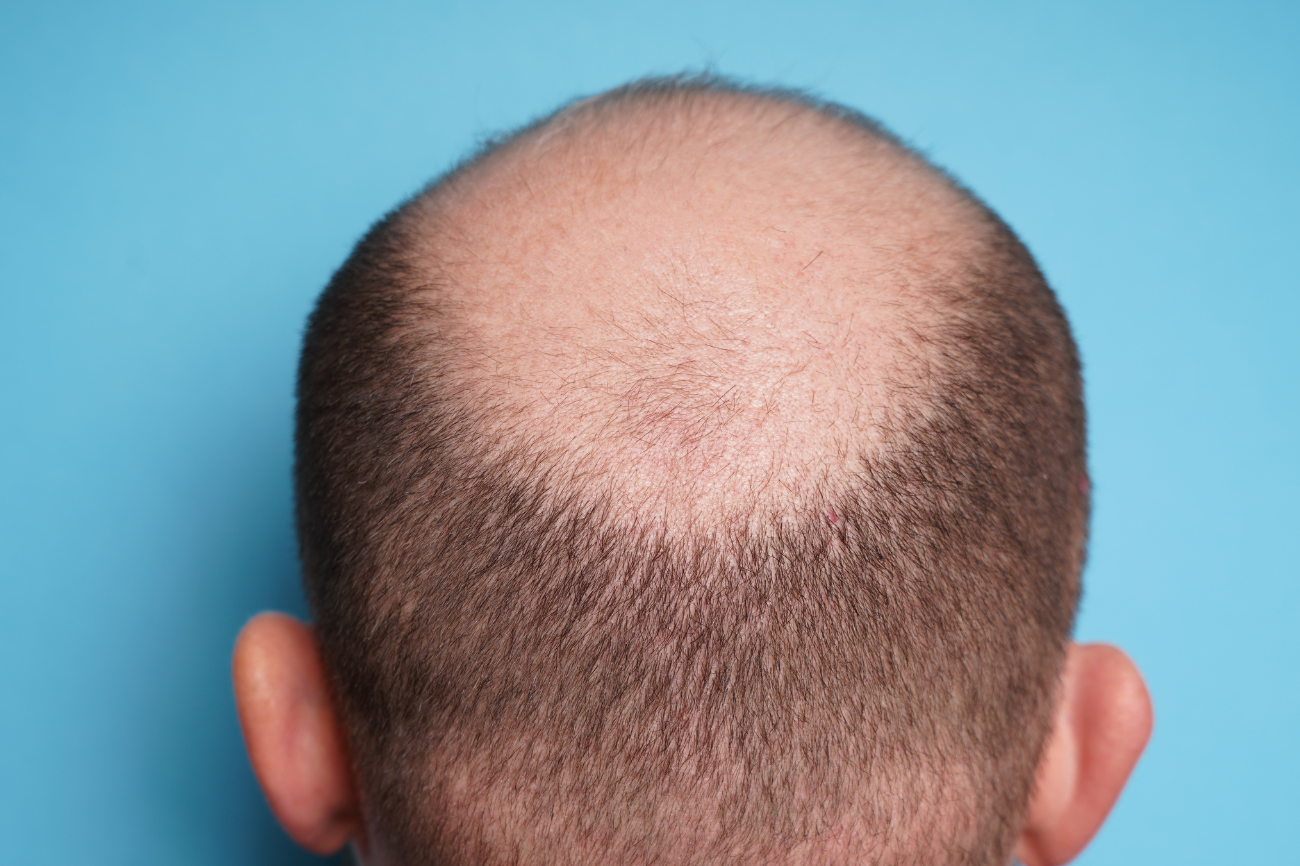
For many of us, hair loss is a fact of life.
About 95 percent of the time, hair loss is due to a condition called androgenic alopecia — also called male or female pattern baldness. And if you are part of 80 percent of men or 50 percent of women who have experienced this kind of hair loss throughout their lives, chances are you’re not too thrilled about it.
After all, the hair loss treatment industry in the US is booming. Whether you are talking about oils, serums, shampoos or conditioners, according to the latter IBISWorld Market Researchthe industry is expected to earn revenue of $3.9 billion in 2023.
Read more: 20 things you didn’t know about… hair
But if scientists are working overtime to make bald heads a thing of the past, it begs the question: Why did Mother Nature hurt us so badly in the first place? Could there be an evolutionary benefit to going bald?
Bald biology
Let’s start with the basics. Hormones called androgens are mainly to blame for significant hair loss; specifically, an androgen called dihydrotestosterone (DHT), which the body creates from its total supply of testosterone each day.
While DHT is responsible for hair growth elsewhere on the body, on the top of the head it causes the hair follicles to shrink – making the hair thinner – until the follicle becomes too small to grow any hair at all. This happens more often in men, simply because they have a greater supply of testosterone and therefore DHT.
(Younger women naturally produce enough estrogen to mask the effects of whatever small amount of DHT is produced. As we age and produce less estrogen after menopause, however, thinning hair more often creates an unwanted appearance.)
Of course, we can’t blame everything on hormones. In fact, for more than 80 percent of people who experience hair loss, a father experienced the same. Genetics undoubtedly play a role—though scientists aren’t quite sure in what capacity.
Decades of research have pointed to the X chromosome, but there’s more to it than that. A 2017 study of more than 52,000 UK men published in PLOS Geneticsfor example, identified over 250 independent genetic loci associated with male pattern baldness (not all of them on the X chromosome).
In addition, there are other factors, such as physical and emotional stress or illness. It’s common for those who have just given birth, for example, to experience postpartum hair loss in the following months, according to Cleveland Clinic.
This is probably due to the fact that the hair follicles are cut off from their blood supply and are forced to go into a resting phase prematurely. Likewise those who pass certain medical treatments like chemotherapy just skip the growth phase of the hair follicles completely because the growing cells are quickly attacked.
Theories of evolution
Not surprisingly, why pattern baldness might have evolved in humans in the first place is an even more difficult puzzle to unravel. Typically, traits evolve for one of two reasons: either to help ensure survival, or to make it easier to find a sexual partner and ultimately produce offspring.
Read more: Why do we have fingerprints?
Most scientists agree that there is little argument that a shiny dome ensures survival – although opinions on whether it makes a person more attractive are still not settled.
A 1996 study published in Ethology and Sociobiology, argues that we inherently associate male pattern baldness with social maturity, a nonthreatening form of dominance that has more to do with wisdom and nurture than aggression. Perhaps this makes men with less hair on their heads more ideal partners.
Meanwhile, the authors of a 2018 study aptly and amusingly titled “Male pattern hair loss: Taking one for the team” argue that male pattern hair loss is an evolutionary drive that directs women to choose younger mates.
“Evidence suggests that conception by younger fathers is more likely to result in live births and less likely to result in miscarriage,” they wrote. “Hence the selection of younger men, mediated by [hair loss] may improve the fitness of the population and the species at the expense of the individual.’
But rest assured, while science still can’t answer the question of why humans evolved to go bald, it does offer a solution for those experiencing significant hair loss: Finish what Mother Nature started and shave it off!
Recently University of Pennsylvania study found that people perceived men with shaved heads as more dominant than those with thin hair—or even intact, thick hair. So, depending on the look you’re looking for, it’s always an option. (Results may vary.)

